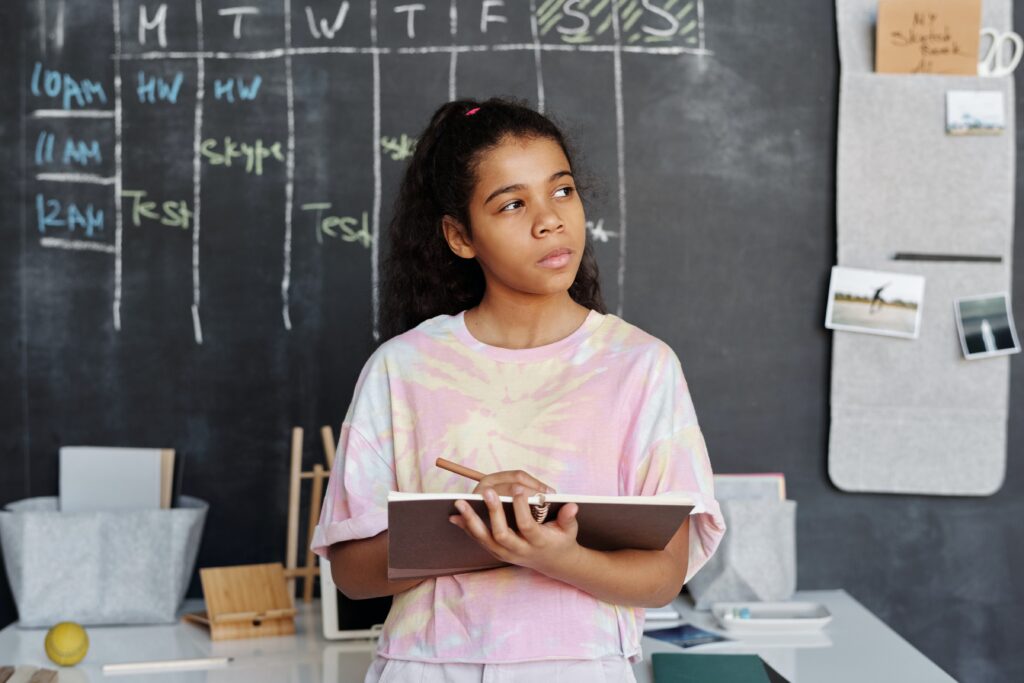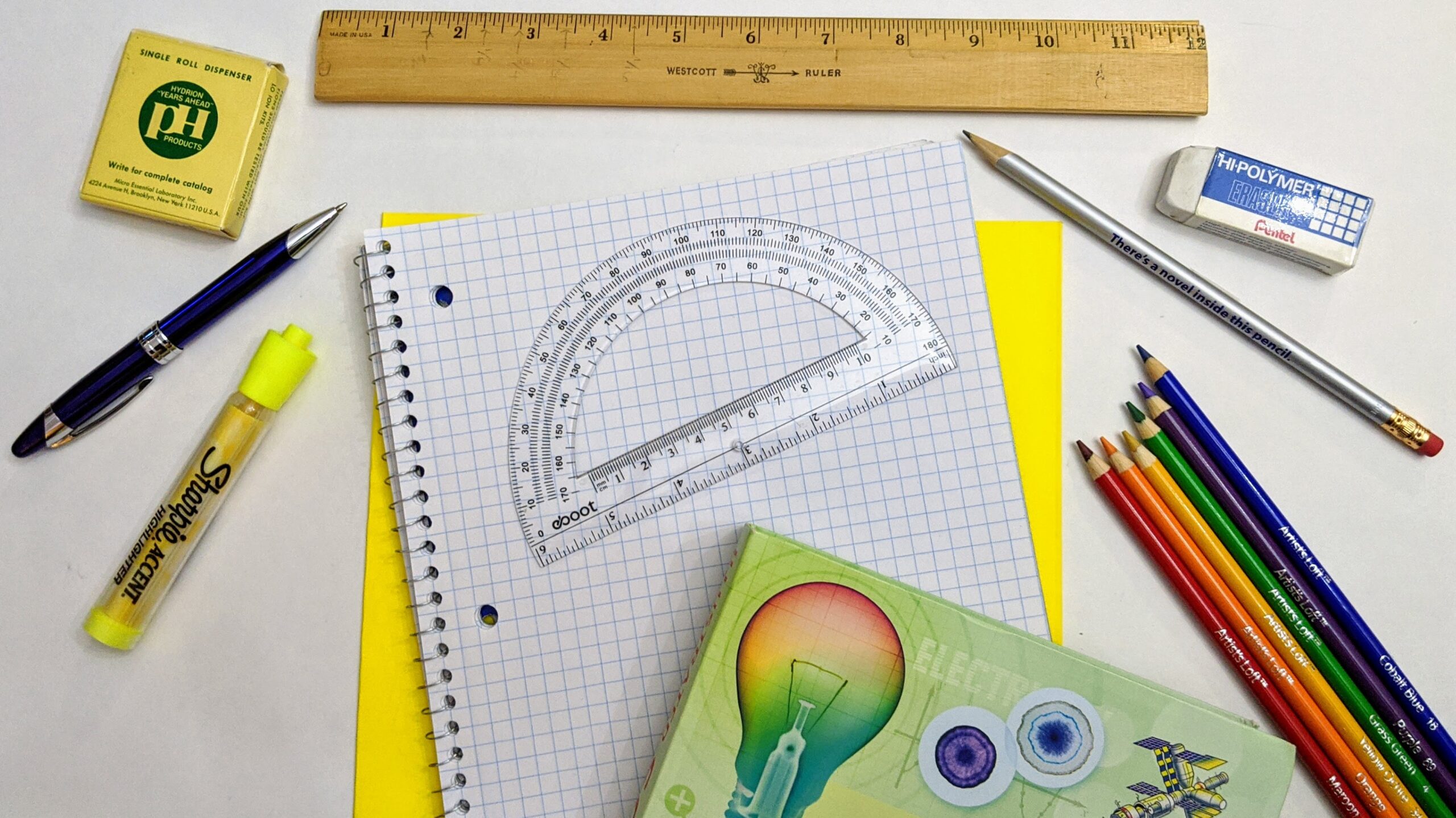In recent years the Selective High School Placement Test changed to focus on thinking skills rather than general ability. This 40 questions section requires students to understand how to think logically and…

In recent years the Selective High School Placement Test changed to focus on thinking skills rather than general ability. This 40 questions section requires students to understand how to think logically and critically in order to find the answers to the questions.
When supporting your child to prepare for the Selective High School Placement Test you may want to help them learn and practice different problem-solving techniques such as working backwards, making diagrams or tables, and breaking down complex problems into smaller, more manageable parts.
Today we will take a closer look at making a table to help solve challenging questions. To illustrate how to do this we will use an example question from the Thinking Skills Practice Test.
The Question
The question we are going to use as an example reads as follows:
Five houses stand together in a row. One person lives in each house; each person likes a different sport; they all use different forms of transport.
We also know that:
- Mr Green likes tennis and lives next to Ms White, who is on the left end of the row and drives a van.
- Dr Grey uses a taxi.
- The person who likes badminton lives in the middle of the row.
- Miss Orange drives a car and doesn’t like swimming.
- The person who likes swimming does not have a motorcycle.
- Mrs Black likes football; she lives next to Miss Orange and two houses from Dr Grey.
- The person who rides a bicycle also likes football.
- The person who likes golf lives next to the person who likes badminton.
Using the information above, who lives in the last house on the right of the row?
A Dr Grey
B Miss Orange
C Mrs Black
D Mr Green
Setting Up a Table To Help Us Answer The Question
The question above has lots of details which difficult to hold in your mind at any given time. Using table will help us piece together the information needed to find the answer.
When setting up our table we need space for 3 pieces of information:
- the persons name
- the sport they like
- the transport the like
We also know there are 5 houses in a row.
So we could set up a table as follows:
| House | 1 | 2 | 3 | 4 | 5 |
| Person | * | ||||
| Sport | |||||
| Transport |
We might also want to mark out the piece of information we are looking for. In this case, who lives in house number 5. I have put an asterix in that cell to mark it. This isn’t complete necessary but it is helpful in a test environment so that you don’t spend unnecessary time on questions once you have the answer.
Filling In Basic Information
From here we can work through the information provided to help us fill in the table:
For example in the first point it mentions “Ms White, who is on the left end of the row and drives a van.“
| House | 1 | 2 | 3 | 4 | 5 |
| Person | Ms White | * | |||
| Sport | |||||
| Transport | Van |
The first point also mentions “Mr Green likes tennis and lives next to Ms White“.
| House | 1 | 2 | 3 | 4 | 5 |
| Person | Ms White | Mr Green | * | ||
| Sport | Tennis | Badminton | |||
| Transport | Van |
Another point mentions “The person who likes badminton lives in the middle of the row“.
By filling in this basic information we lay the foundations to add the more complex information.
Continuing to Fill in the Information
Once we have our basic information sorted we can use deduction for information like “The person who likes golf lives next to the person who likes badminton“. We know that means they live in house 2 or 4, and since Mr Green is in house 2 and likes tennis it must be house 4.
| House | 1 | 2 | 3 | 4 | 5 |
| Person | Ms White | Mr Green | * | ||
| Sport | Tennis | Badminton | Golf | ||
| Transport | Van |
We can also read “Mrs Black likes football…” and “The person who rides a bicycle also likes football.“
So we know Mrs Black rides a bike and likes football. We can conclude that she must live in house 5 as all the other houses have a different sport or vehicle.
| House | 1 | 2 | 3 | 4 | 5 |
| Person | Ms White | Mr Green | Mrs Black | ||
| Sport | Tennis | Badminton | Golf | Football | |
| Transport | Van | Bike |
The question is who lives in the last house on the right of the row. We now have our answer: Mrs Black (C). You can stop here.
Still Curious?
Depending on how many questions you need to answer you may need to complete an entire table. So let’s continue, in this instance out of curiosity.
It also says: “Mrs Black likes football; she lives next to Miss Orange and two houses from Dr Grey. ” So we now know where Miss Orange and Dr Grey live. We also know “Dr Grey uses a taxi.” and “Miss Orange drives a car“
| House | 1 | 2 | 3 | 4 | 5 |
| Person | Ms White | Mr Green | Dr Grey | Miss Orange | Mrs Black |
| Sport | Tennis | Badminton | Golf | Football | |
| Transport | Van | Taxi | Car | Bike |
It also mentions “The person who likes swimming does not have a motorcycle.” so we know that the other options swimming and motor cycle must fit in as follows:
| House | 1 | 2 | 3 | 4 | 5 |
| Person | Ms White | Mr Green | Dr Grey | Miss Orange | Mrs Black |
| Sport | Motor cycle | Tennis | Badminton | Golf | Football |
| Transport | Van | Swimming | Taxi | Car | Bike |
Our table is now complete. We could now easily answer any questions about the people who live in these 5 houses.
How A Table This Can Help With The Thinking Skills Section
Without creating the table and filling it in to help us better understand the question, there is little chance of being able to find the answer C) Mrs Black. In a test environment having skills like this can set a student apart and allow them to gain entry to the high school of their choice.
While not every question is suited to creating a table, knowing about this problem solving technique, (and practicing it) can help your child get ready for the Selective High School Placement Test. Why not try this yourself with other thinking skills questions in the practice questions (and answers).
For more strategies you can read our Test Taking Strategies for The Selective High School Placement Test, or for more help specifically with Thinking Skills we have a blog post on Using Diagrams To Help With Thinking Skills In The Selective High School Test and Breaking Down Difficult Questions Into Manageable Parts.
We also offer one on one tutoring, in Hurstville Sydney or online. We have helped hundreds on students prepare for the Selective High School Placement Test and gain entry into the school their choice.

Selective High School Test Preparation
In our Selective School Preparation Program, students will learn and develop a strong conceptual understanding of all key concepts. Students will receive one on one support where our skillful tutor will cater to each student’s weakness and work along with them to perform their best. Find out more…



